Powerful conservation tech tools are gathering more data in the field than ever before. But without equally powerful and effective data management and processing tools, that data - no matter how groundbreaking or interesting - will not be able to reach its full potential for impact.
Data management can sometimes seem intimidating to conservationists, especially those just getting started in the world of conservation tech or experimenting with new data collection methods. While every community member's workflow and preferred data management and processing methods may be different, this group can serve as a resource to explore what works for others, share your own advice, and develop new strategies together.
Below are a few WILDLABS events dealing with datasets collected from various conservation tech tools:
Nicole Flores: How do I get started with Wildlife Insights?
Jamie Macaulay: How do I analyse large acoustic datasets using PAMGuard?
Sarah Davidson: Tools for Bio-logging Data in Conservation
Whatever conservation tech tools you work with, and whatever your preferred data management methods, we hope you'll find something helpful and effective in this group when you become a member!
No showcases have been added to this group yet.
- @joevstaas
- | Mr
Working with ocean data, technology and collaboration. Empowering ocean insights with a cloud-based geospatial platform, the Ocean Data Platform at HUB Ocean.
- 0 Resources
- 0 Discussions
- 3 Groups
- @malikmorg
- | He/Him
Software Developer
Interested in all things technology, system design, and hardware, especially in the spaces of conservation, exploration, and the environment.
- 0 Resources
- 0 Discussions
- 10 Groups
- @Lekan2881
- | He
I'm Lekan Agboola, a nature enthusiast currently pursuing a B.Agric Tech in Ecotourism and Wildlife Management.
- 0 Resources
- 0 Discussions
- 3 Groups
- @fabiola
- | She/her
- 0 Resources
- 0 Discussions
- 5 Groups
- @lrabeony.rac
- | He | His
Agronomic Engineer with 5 years of experience in Project Management, 2 years in Farm Operations Management and Reforestation Project, seeking for innovative solutions for community-oriented Conservation Project.
- 0 Resources
- 0 Discussions
- 3 Groups
- @Markbowler
- | He/Him
University of Suffolk
Wildlife distributions and the effects that human activity has on populations. Spatial ecology of Amazonian mammals through audio and camera surveys. Hunter and gun tracking in Peru. Bats in suburban and agricultural landscapes in the UK

- 0 Resources
- 4 Discussions
- 11 Groups
- @SarahSanti
- | She
PCB Design/Applications Engineer & Wildlife Rehabber
- 0 Resources
- 0 Discussions
- 3 Groups
- @limburan
- | she/her
Bat Conservation Trust
Research Scientist at Bat Conservation Trust
- 0 Resources
- 0 Discussions
- 10 Groups
- @Sarah_Stoner
- | She/her
Intelligence Lead @Go Insight. Intelligence professional, advocating for the use of intelligence and analysis to combat international wildlife trafficking.
- 0 Resources
- 3 Discussions
- 3 Groups
- @machadoams
- | He/Him
Universidade Federal de Santa Catarina (UFSC)
I am a behavioural ecologist interested in the role of individual variation in ecological interactions and in human-wildlife dimensions
- 0 Resources
- 0 Discussions
- 9 Groups
- @eleanorhorvath
- | she/her
Water Daughter
- 0 Resources
- 0 Discussions
- 10 Groups
- @Tamara
- | she/hers
Molecular ecologist and eDNA enthusiasist. Mammals, Southern Africa, fish otter, fishes in Europe
- 0 Resources
- 0 Discussions
- 3 Groups
If you're a Post-Doctoral Fellow, a PhD student, or a member of the research staff interested in applying your computational skills to support active research publications, please read on to learn about the Cross-...
5 August 2025
Really liked this article on dataset evaluation and how we can move towards a more standardized and inter-operable nature data space.
5 August 2025
Article
Everything you need on the IUCN Red list is now accessible from R, outputted as tibble to facilitate data query, analysis, and visualization.
20 July 2025
Funding
2025 Ebbe Nielsen Challenge seeks innovations for open biodiversity data
17 July 2025
Link
Firetail now features a fresh account over at Bluesky - follow us for updates on animal tracking, bio-logging and, of course, upcoming releases and features!
26 June 2025
In this case, you’ll explore how the BoutScout project is improving avian behavioural research through deep learning—without relying on images or video. By combining dataloggers, open-source hardware, and a powerful...
24 June 2025
Careers
Rewilding Europe is seeking a Business Intelligence Analyst to support measuring rewilding impact through data automation, dashboards, and cross-domain analysis.
3 June 2025
HawkEars is a deep learning model designed specifically to recognize the calls of 328 Canadian bird species and 13 amphibians.
13 May 2025
Hi together, I am working on detecting causalities between land surface dynamics and animal movement by using satellite-based earth observation data. As this is might be your expertise I kindly ask for your support...
8 May 2025
The Convention on the Conservation of Migratory Species (CMS) is seeking information on existing databases relevant for animal movement. If you know of a database that should be included, please complete the survey to...
30 April 2025
Conservation International is proud to announce the launch of the Nature Tech for Biodiversity Sector Map, developed in partnership with the Nature Tech Collective!
1 April 2025
Funding
I have been a bit distracted the past months by my move from Costa Rica to Spain ( all went well, thank you, I just miss the rain forest and the Ticos ) and have to catch up on funding calls. Because I still have little...
28 March 2025
August 2025
October 2025
event
event
November 2025
event
September 2024
event
event
87 Products
Recently updated products
| Description | Activity | Replies | Groups | Updated |
|---|---|---|---|---|
| Bird Monitoring Data Exchange is a standard often used for birds data. |
+4
|
AI for Conservation, Data management and processing tools, Emerging Tech | 8 months 2 weeks ago | |
| Super interesting work! Maybe one day you will also be able to have a career as a science fiction writer. Lot of interesting outcomes can come of this. ❤️ |
|
Acoustics, Data management and processing tools, Early Career | 8 months 2 weeks ago | |
| It's a really good question, Colleen!Ideally, I would work with two developers, or at least one developer and one other party who knows what developing an app like this would mean... |
|
Data management and processing tools, Software Development | 8 months 3 weeks ago | |
| Hi Lucy,I now realised it is an old thread and you most likely have already found a solution long ago but this might be of interest to others.As mentioned previously, it is... |
+5
|
Camera Traps, Data management and processing tools, Open Source Solutions, Software Development | 9 months 2 weeks ago | |
| Do you use camera traps? If so, we'd love if you could take five minutes to fill out this survey: tinyurl.com/zambasurveyWith our WILDLABS... |
|
AI for Conservation, Camera Traps, Data management and processing tools, Software Development, Open Source Solutions | 10 months 1 week ago | |
| Hi all! I've recently founded a company called EarthScape, which is focused on helping landowners transition to Native Plants, using... |
|
Software Development, Climate Change, Data management and processing tools | 10 months 2 weeks ago | |
| That's a really honest answer Kim! Thank you for clarifyingYou're likely not the only one. In fact it would be interesting to find out how much conservation tech use and... |
|
Funding and Finance, Data management and processing tools | 10 months 3 weeks ago | |
| Agreed. I have recently begun using SegmentAnything as a replacement for Detectron and have been very pleased. However, for a fish school I don't know how well it would do out of... |
|
Data management and processing tools, AI for Conservation | 11 months 4 weeks ago | |
| Really interesting, I will take a look |
|
AI for Conservation, Camera Traps, Data management and processing tools, Emerging Tech | 1 year ago | |
| Great Project !! |
|
Data management and processing tools | 1 year ago | |
| interesting!!! |
|
AI for Conservation, Animal Movement, Data management and processing tools | 1 year ago | |
| Thanks!I'm definitely looking at Smart and EarthRanger for overall management eventually, but for now I just want to track what we have better - especially as a base map to... |
|
Geospatial, Data management and processing tools | 1 year ago |
Mongabay's Environmental Data Journalism Webinar
1 June 2022 3:26pm
3 June 2022 4:00pm
13 June 2022 12:52pm
UKAN+ Monitoring UK Biodiversity Symposium 15-16th June
31 May 2022 2:58pm
Data Scientist for Biodiversity Analysis
26 May 2022 10:24am
WILDLABS Virtual Meetup: Data Sharing & Archiving in Movement Ecology
10 May 2022 11:26pm
Executive Director - The Eric & Wendy Schmidt Center for Data Science & Environment, UC Berkeley
9 May 2022 10:13am
WILDLABS Virtual Meetups Season Four: Tracking Progress
29 April 2022 9:57am
Opportunity: Technical Specialist - Remote Sensing, Conservation Technology
22 March 2022 12:00am
Opportunity: Technical Specialist, Analytics, Conservation Technology
21 March 2022 12:00am
Opportunity: Global Science Data and Technology Graduate Intern
10 March 2022 12:00am
Opportunity: Coding 4 Conservation
10 March 2022 12:00am
EarthRanger Announces Inaugural Conservation Tech Award Recipients
3 November 2021 12:00am
Opportunity: PhD or Postdoctoral Research Fellowships - Chinstrap penguin biologging
1 November 2021 12:00am
How do I turn a conservation tech project into a product?
20 October 2021 12:00am
Widening the Bottleneck: Can Citizen Science Accelerate Conservation?
19 August 2021 12:00am
New Resource: Data Visualisation Tool for Animal Movement Data
18 August 2021 12:00am
Tech Tutors: How do I get started with Wildlife Insights?
29 July 2021 12:04am
Wildlife Insights Launches
27 July 2021 12:00am
Tech Tutors: How do I get started with Megadetector?
22 July 2021 3:34pm
How do I get started with Megadetector?
 Siyu Yang
Siyu Yang
7 July 2021 12:00am
WILDLABS Tech Tutors: Season 3
6 July 2021 12:00am
How do I choose the right camera trap(s) based on interests, goals, and species?
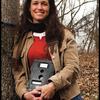 Marcella Kelly
Marcella Kelly
6 July 2021 12:00am
Webinar: Can we redesign conservation funding?
 Internet of Elephants
Internet of Elephants
17 June 2021 12:00am
Tech4Wildlife Leaders: Resolving Human-Giraffe Conflict
21 May 2021 12:00am
New Papers: Methods in Ecology and Evolution
23 April 2021 12:00am
Competition: Hack the Planet 2021
 The Commonwealth
The Commonwealth
23 April 2021 12:00am
Best global species database?
10 March 2021 10:30pm
25 March 2021 8:35am
Both yes but mainly no, I liked the concept so much I "borrowed" it from "Endangered Safari" including the digitalized mammals.
Behind the scenes it is fairly simple: Just add relevant animals in a powerpoint, save as JPG, import it to
https://synoptic.design/
and name the area that looks like an animal after the animal- notice it must be the same name you have in the database and the same you will use in your reports,
Save it as a SVG- file and now you are ready to use it in tools like Power BI/ Tableau and custom lots of things like colour and it is interactive/ clickable.
Unfortunately the coverage maps in IUCN did not have good enough data quality for our national park,
So when you create a global database add a digital version of the specie and of course, always updated ranges.
28 March 2021 5:58pm
Very interesting! Thanks for sharing, @Nhanq !
6 April 2021 8:42pm
The GBIF backbone taxonomy is composed of Catalogue of Life, ITIS, the Red List and dozens of other checklists. It's just been updated again, but this blogpost from a 2019 update does a good job of explaining what it is: https://data-blog.gbif.org/post/gbif-backbone-taxonomy/
Another more recent post can help get one up to speed on using it via our species API: https://data-blog.gbif.org/post/gbif-species-api/
The 2021 #Tech4Wildlife Photo Challenge: Community Highlights
25 March 2021 12:00am
Funding Opportunity: COVID-19 Science Fund
10 March 2021 12:00am
Resource: WildID
8 March 2021 12:00am
New Paper: Drones and Bornean Orangutan Distribution
12 February 2021 12:00am

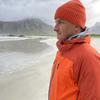




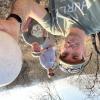
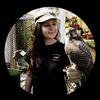
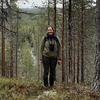
















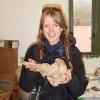































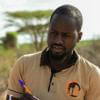

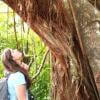



3 June 2022 11:08am